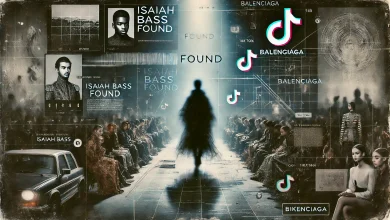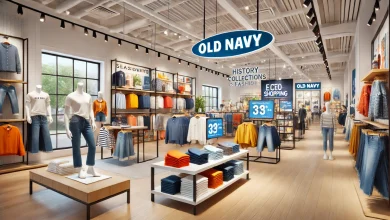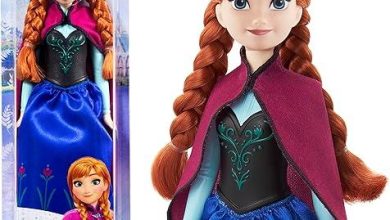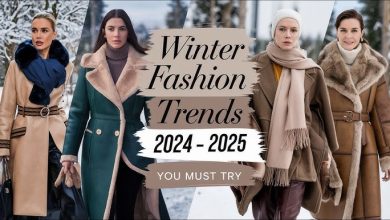Exploring 80s Fashion: A Dive Into Daring Styles and Timeless Trends
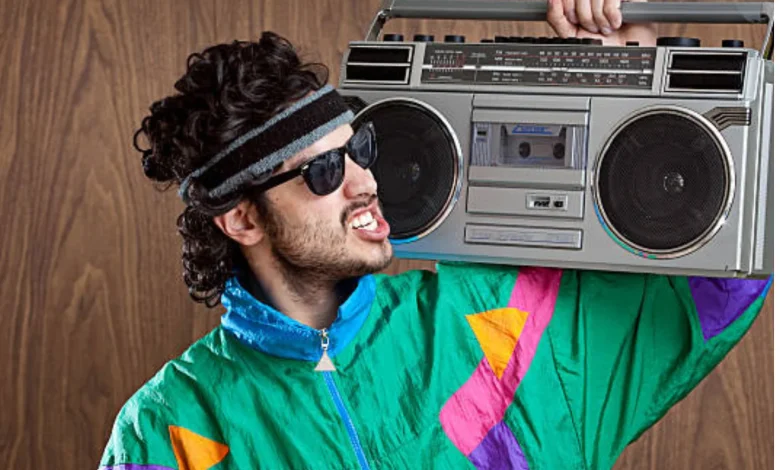
The 1980s were a transformative decade for fashion, marked by bold choices, unapologetic self-expression, and a revolution in style. The decade celebrated individuality, creativity, and a spirit of excess, making 80s fashion as iconic as the cultural and social shifts of the time. From neon hues to oversized power suits, the trends of this unforgettable era continue to influence modern fashion. Let’s take a closer look at the defining elements of 80s fashion, the cultural forces behind it, and how these trends still resonate today.
Table of Contents
The Evolution of 80s Fashion: A Cultural Revolution
The 1980s were shaped by profound social changes, and fashion was no exception. The rise of MTV in 1981 marked a pivotal moment in the way trends spread, bringing fashion into the realm of mass media. Music videos were no longer just about the music—they were a platform for showcasing unique and bold styles, with artists like Madonna, Michael Jackson, and Prince setting the tone for fashion worldwide.
The decade also saw a booming consumer culture, and fashion became an essential means of personal expression. As more women entered the workforce, the concept of “power dressing” emerged. At the same time, fitness culture exploded, leading to the popularity of athleisure as everyday wear. This was a time when fashion was not just about looking good—it was about making a statement.
Key Trends That Defined 80s Fashion
Neon Colors: Bold, Vibrant, and Impossible to Ignore
If there’s one thing that defines 80s fashion, it’s neon. Electric shades of pink, green, orange, and yellow became the hallmark of the decade. Neon colors were everywhere, from casual wear to formal outfits, even appearing in makeup palettes. Popular items like neon leggings, oversized sweaters, and cropped tops paired with vibrant accessories in neon hues became signature looks of the time.
Neon wasn’t just a trend for the street; it appeared in high-fashion runway shows as well, marking a dramatic shift toward bold, eye-catching colors.
Power Suits: A Statement of Strength
One of the most iconic fashion trends of the 1980s was the power suit. This was driven by the increasing presence of women in the workforce. Power suits, often featuring sharp tailoring, bold lines, and shoulder pads, became a symbol of authority, independence, and sophistication. Television shows like Dynasty showcased glamorous women in structured suits that communicated power.
Men’s suits during this period also evolved. Wide lapels, high-waisted trousers, and double-breasted jackets became synonymous with power and professionalism. The focus on strong, exaggerated silhouettes became a symbol of the ambition and energy of the era.
Denim: A Universal Staple
Denim was ubiquitous in 80s fashion, making it a universal staple. High-waisted jeans, often paired with tucked-in shirts or cropped tops, became a popular style for both men and women. Acid-washed jeans, a popular look during the decade, added an edgy flair to casual looks.
Denim jackets, often oversized, were also a major fashion statement. Many jackets were personalized with patches, pins, or embroidery, reflecting the DIY culture that was also influential in the era. Denim, with its versatility and timeless appeal, continues to be a major fashion element to this day.
Accessories That Defined 80s Fashion
In the 80s, accessories were not just add-ons—they were essential. Chunky necklaces, oversized earrings, and bold bracelets became signatures of the decade. Hair accessories like scrunchies, headbands, and bows were just as important, often featuring bright patterns or metallic finishes that matched the vibrant colors of the time.
Fingerless gloves, made famous by Madonna, added an edgy flair, while wide belts helped define waistlines and balance the oversized silhouettes that dominated the era. Accessories were an integral part of the bold, statement-making looks that defined the 80s.
Athleisure and Sportswear
Fitness culture and the growing popularity of gyms played a significant role in 80s fashion. Athleisure, once confined to athletic activities, entered the realm of everyday fashion. Tracksuits, neon leotards, and leggings became iconic staples of casual style. Major sportswear brands like Nike, Adidas, and Reebok capitalized on this trend, designing stylish yet functional apparel that blended the worlds of fashion and fitness.
Athleisure became more than just functional—it became fashionable. Fitness celebrities like Jane Fonda helped popularize the trend, and the fitness boom of the 80s marked a new chapter in how fashion intersected with physical culture.
Hairstyles and Makeup: Bold Choices That Defined the Era
The 80s were all about bigger and bolder when it came to hair. Teased, permed, and heavily sprayed styles aimed for maximum volume. Women embraced side ponytails, crimped textures, and layered cuts, while men experimented with mullets and spiked hairstyles. Volume was the key, and hairspray was a must-have product to achieve those big, bold looks.
Makeup in the 80s was equally daring. Bright, colorful eyeshadows, heavy eyeliner, and vibrant lipsticks were the norm. Blush was applied generously to create a dramatic, bold look. Makeup in the 80s wasn’t subtle—it was all about creating a strong visual impact, often with bright and contrasting colors.
Iconic Influences on 80s Fashion
The Rise of Supermodels
The 1980s also marked the rise of the supermodel. Icons like Cindy Crawford, Naomi Campbell, and Claudia Schiffer became global symbols of beauty, and their influence on fashion was undeniable. These models redefined the runway, and their faces graced magazine covers, commercials, and campaigns, helping to shape the era’s fashion trends.
The supermodel era also made the fashion industry more commercialized, turning designers, models, and celebrities into household names. These women weren’t just models—they were cultural influencers who set the tone for the decade’s beauty standards and fashion preferences.
MTV’s Role in Shaping 80s Fashion
The launch of MTV in 1981 changed the way music and fashion interacted. Music videos became a powerful platform for artists to showcase their unique fashion styles. Madonna’s lace gloves and layered skirts, Michael Jackson’s red leather jacket from Thriller, and Prince’s flamboyant outfits became iconic looks of the 80s. These visuals were broadcast into homes worldwide, making MTV a crucial force in shaping the fashion of the era.
The way music and fashion were intertwined during the 80s helped establish the concept of “video fashion,” where the aesthetics of an artist’s music video were just as important as the music itself.
The Punk Movement
Punk fashion, which had originated in the late 70s, carried over into the 80s with its rebellious and anti-establishment ethos. Punk fashion embraced torn clothing, leather jackets, band t-shirts, and DIY elements. Punk culture thrived in the underground music scene, but its influence spread into mainstream fashion through designers like Vivienne Westwood, who brought punk elements to high fashion.
Punk fashion challenged traditional fashion norms, and its DIY aesthetic influenced how people approached personal style in the 80s. The movement remained an important part of the 80s, adding an edge to the otherwise polished looks of the era.
The Legacy of 80s Fashion in Today’s Trends
Oversized Silhouettes
One of the most enduring trends of 80s fashion is the oversized silhouette. Today, oversized blazers, loose-fitting trousers, and baggy coats are still celebrated in modern fashion for their comfort and chic appeal. These pieces are often paired with more fitted items to balance out the proportions, creating a stylish, relaxed yet fashionable look.
Neon Revival
Neon colors, once seen as a hallmark of the 80s, have made a significant comeback in modern fashion. Bright neon accents are common in today’s streetwear and high-fashion collections. Whether it’s a pair of neon sneakers, a handbag, or a jacket, these vibrant hues continue to add energy and excitement to contemporary outfits.
Retro Sneakers
Sneakers from the 80s, such as Nike Air Jordans, Adidas Superstars, and Reebok Classics, have become timeless icons in today’s fashion scene. These shoes, with their retro appeal, are still highly sought after, blending nostalgia with modern aesthetics. Today, they are just as much a part of high-fashion collections as they are in casual streetwear looks.
The Modern Power Suit
While power suits have evolved, their essence remains unchanged. Contemporary versions of the power suit incorporate bolder cuts, asymmetrical details, and innovative fabrics. The timeless message of empowerment, confidence, and authority that defined the 80s power suit is still alive in today’s fashion.
Why 80s Fashion Will Always Be Iconic
The 1980s were a decade of fearless experimentation and bold statements in fashion. The colors were bright, the silhouettes were exaggerated, and the accessories were bigger than ever before. 80s fashion celebrated individuality, self-expression, and creativity, and these values continue to inspire designers and fashion enthusiasts today.
Whether through a tailored power suit, a pair of acid-washed jeans, or a neon accessory, the essence of 80s fashion lives on. It was a time when fashion wasn’t just about clothes—it was about making a statement. Today’s fashion continues to draw inspiration from the audacious spirit of the 80s, ensuring that its influence will remain timeless.
FAQs About 80s Fashion
What were the most iconic 80s fashion trends?
Neon colors, power suits, oversized accessories, and denim were some of the defining trends of 80s fashion.
Why does 80s fashion still influence today’s trends?
The bold and innovative spirit of 80s fashion resonates with modern designers, combining nostalgia with contemporary styles.
How did music impact 80s fashion?
Artists like Madonna and Michael Jackson used music videos to showcase unique and bold looks, setting global trends.
What role did women’s power dressing play?
It symbolized strength and independence, reflecting the societal changes of women entering professional spaces.
Can 80s fashion be worn today?
Absolutely! Many 80s trends, like neon accents, oversized blazers, and retro sneakers, are both stylish and versatile for modern wear.
